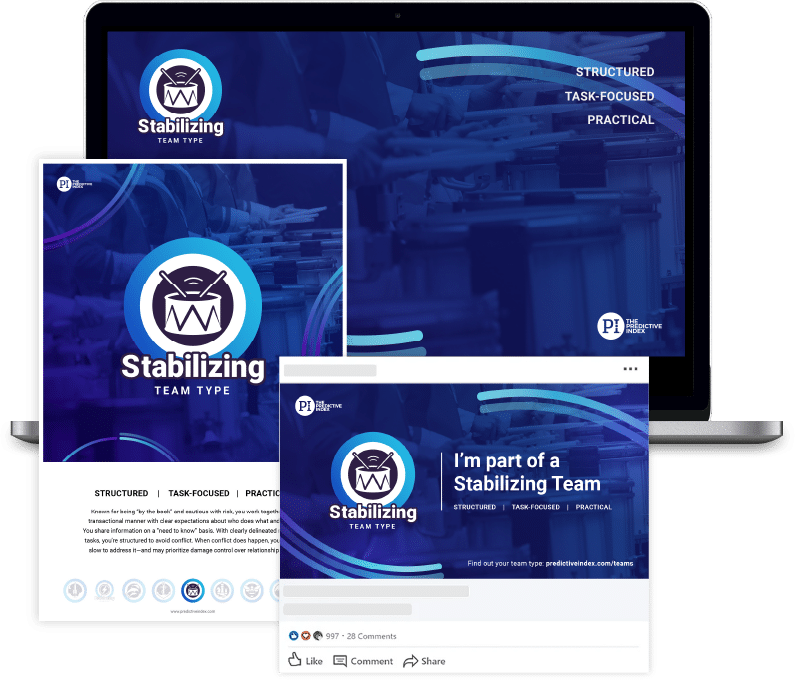
Stabilizing Team Downloads
Celebrate your Team Type and download a virtual meeting background, team poster, and social graphic to share with your network.
Download PackageCharacteristics of a Stabilizing Team
Natural Strengths
- Consistent and efficient
- Well-defined chain of command
- Clear expectations for what/how work gets done
Caution Areas
- Rigid structure may restrict how team members work.
- Team processes may create artificial roadblocks.
- Focusing on what’s practical may stifle creativity.
How Stabilizing Teams take action
Self-aware teams understand their strongest tendencies and blind spots, and they take action accordingly. Stabilizing Teams can take advantage of their strengths while addressing shortcomings, by:
Scheduling daily standups. People on your team may prefer to communicate over email or a messaging service. When you’re moving quickly or working on a highly important project, set up 15-minute daily standups so everyone stays engaged and gets on the same page. When your tasks are less urgent, weekly meetings will do the trick.
Resolving team friction. Your tendency to communicate frankly with each other, especially over digital tools, can inadvertently lead to friction. When this happens, talk it through, ideally face to face. Ensure each person has a chance for their viewpoint to be heard. Repeat what was said in your own words to ensure the message is being conveyed correctly and with the right tone.
Resisting perfection. Your team is inclined to seek perfection. Learn to identify the warning signs that you might be over-engineering work or creating obstacles that hinder productivity. Hold each other accountable to the philosophy “Perfect is the enemy of good,” and be cognizant of your tendency to set unrealistic expectations for your work.”